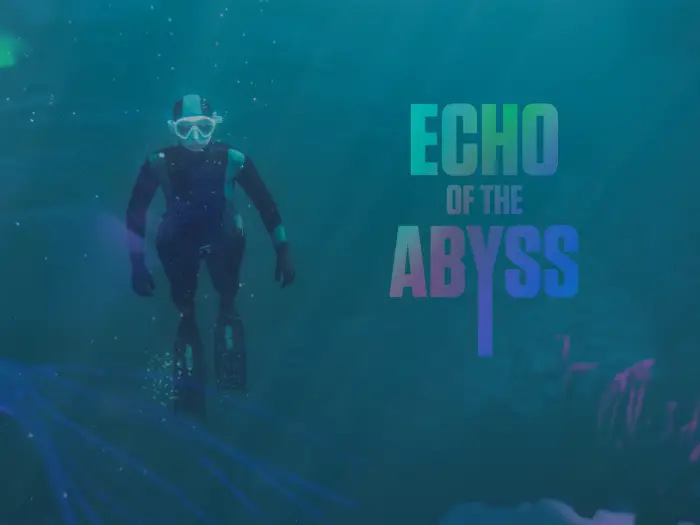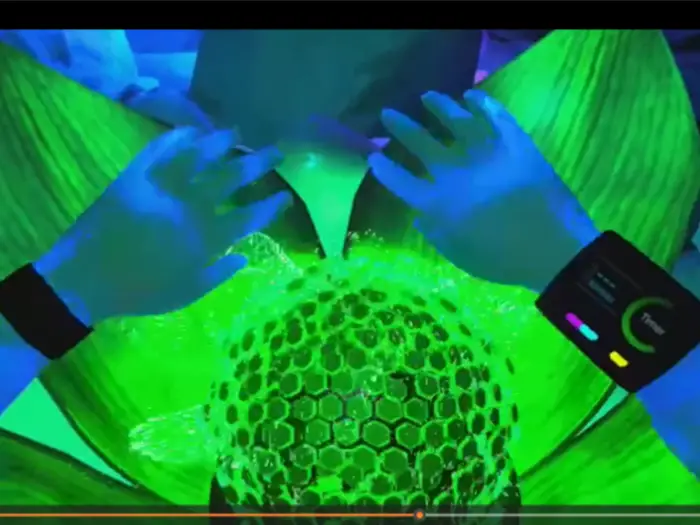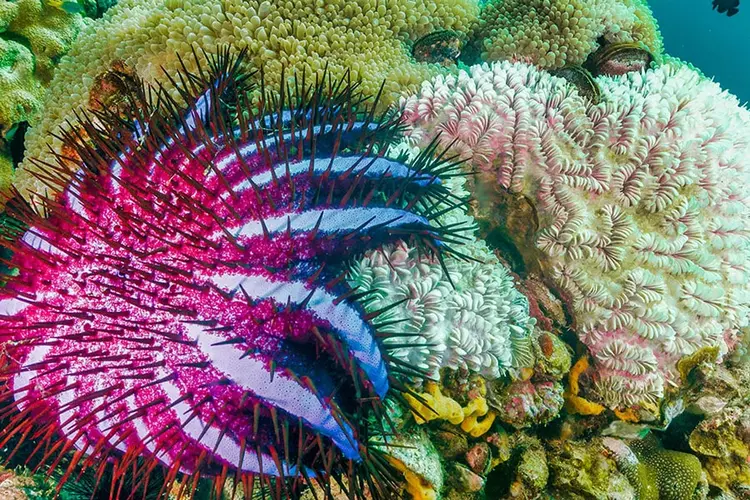Using Virtual Reality to Connect Players With Ocean Ecosystems
Media Inquiries
Fewer people have been to the deepest parts of the ocean than have walked on the surface of the moon. Researchers at Carnegie Mellon University’s Center for Transformational Play(opens in new window) are hoping a virtual trip into the watery abyss will inspire connection with ocean ecosystems, even for people who’ve never been to a beach.
“We want to change the perception people have of the deep sea. That it’s not a scary place, that it’s a fascinating place that needs our attention and stewardship,” said Bea Maggipinto, the lead designer of “Echo of the Abyss(opens in new window),” a virtual reality experience that sends players on a freediving quest into an ocean environment.
Maggipinto is a Ph.D. student with the Center for Transformational Play, part of Carnegie Mellon’s Human-Computer Interaction Institute(opens in new window) in the School of Computer Science(opens in new window). Her research focuses on environmentalism and sustainability. She recently presented the paper, “Echo of the Abyss: Understanding More-Than-Human Interconnectedness in the Deep Sea Through Virtual Reality Experiences”(opens in new window) at the 2025 international Tangible Embodied and Embedded (TEI'25)(opens in new window) conference. The annual event addresses issues of human-computer interactions and new ways to bridge the gap between physical and digital worlds. The 2025 event’s focus on sustainability proved an excellent fit for the "Echo of the Abyss" team, giving Maggipinto a chance to showcase how a purposefully designed virtual reality experience can have a lasting impact on an audience.
“It was really interesting to see during the demo moments how, while some people were divers and curious to try the experience, others had a fear of water. They were unsure, but I could see they wanted to try. They were a bit afraid, but some did decide to try it and were pleasantly surprised,” Maggipinto says. “Part of the point of ‘Echo of the Abyss’ is to try to get people into an environment where they might face barriers in real life, and fear might be one of them.”
“Echo of the Abyss” aims to foster a sense of connection and curiosity toward marine ecosystems by allowing players to embody a diver, guided by aquatic animals, in a safe and contemplative virtual environment. The experience sends participants in an equipment-free dive from the surface to the ocean floor, using visuals that simulate reality to such an extent that players feel as though they’re actually underwater.
While some of the experiences in the game are not likely to occur during an actual dive, such as interacting with a giant squid, the immersive environment makes these encounters emotionally impactful and effective.
Jessica Hammer(opens in new window) is the director of the Center for Transformational Play and Maggipinto’s adviser. She said “Echo of the Abyss” is an exceptional example of how to create change in ways that would not be possible without virtual reality.
“The mission of the Center for Transformational Play is to link excellence in research with quality in game design and production in service of societal goals. In this case, Bea’s work marries cutting-edge theory about the interconnectedness of all species with a beautifully crafted experience to help people change their perception towards blue spaces,” Hammer said.
Maggipinto is a CMU Portugal dual degree Ph.D. candidate between CMU and the Interactive Technologies Institute Laboratory for Robotics and Engineering Systems at the University of Lisbon (LARSyS(opens in new window)). She is currently based in Portugal and close to the ocean environment on which her research is centered. Drawing on her own experiences as a freediver when developing the game, Maggipinto said the design leverages theories from human-computer interaction and ecopsychology. It also draws on the idea of the “hydrocommons” — which sees hydro cycles as an exchange of water between human and nonhuman bodies and is a way of imagining human entanglements with nature. The goal of the game is to promote environmental stewardship and emotional engagement with the ocean.
Maggipinto will present further research findings at the 2025 Conference on Human Factors in Computing Systems (CHI25)(opens in new window) at the end of April, highlighting how the game’s aesthetic feel, interaction design and game mechanics can enhance human connection with remote ecosystems, even for those familiar with an ocean environment.
“We found people behaved as if they were really interacting with the animals in the game, not wanting to touch them, even when the user experience encouraged them to get close,” Maggipinto says. “We also tried the game with a couple of freedivers, and all of them started to equalize their ears as if they were feeling the water pressure like on a real dive.”
While “Echo of the Abyss” is not currently aimed at the consumer VR experience market, the development team is working on expanding the game to include new scenes to connect the animals in the game to real-life problems, such as climate change.
Maggipinto says she hopes that this work will advance understanding of how games and play can shape human behavior and make ocean conservation efforts more effective.
“We want to make people feel more connected to the ocean so that they will feel compelled to protect it.”




